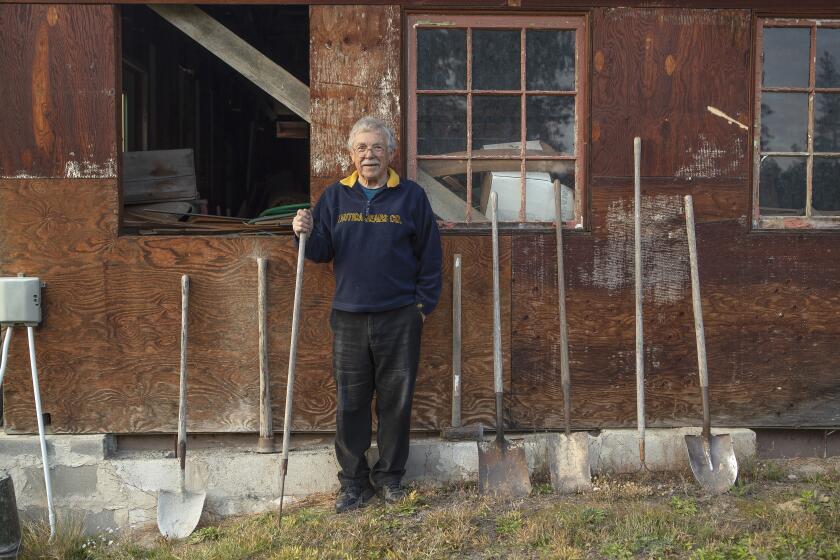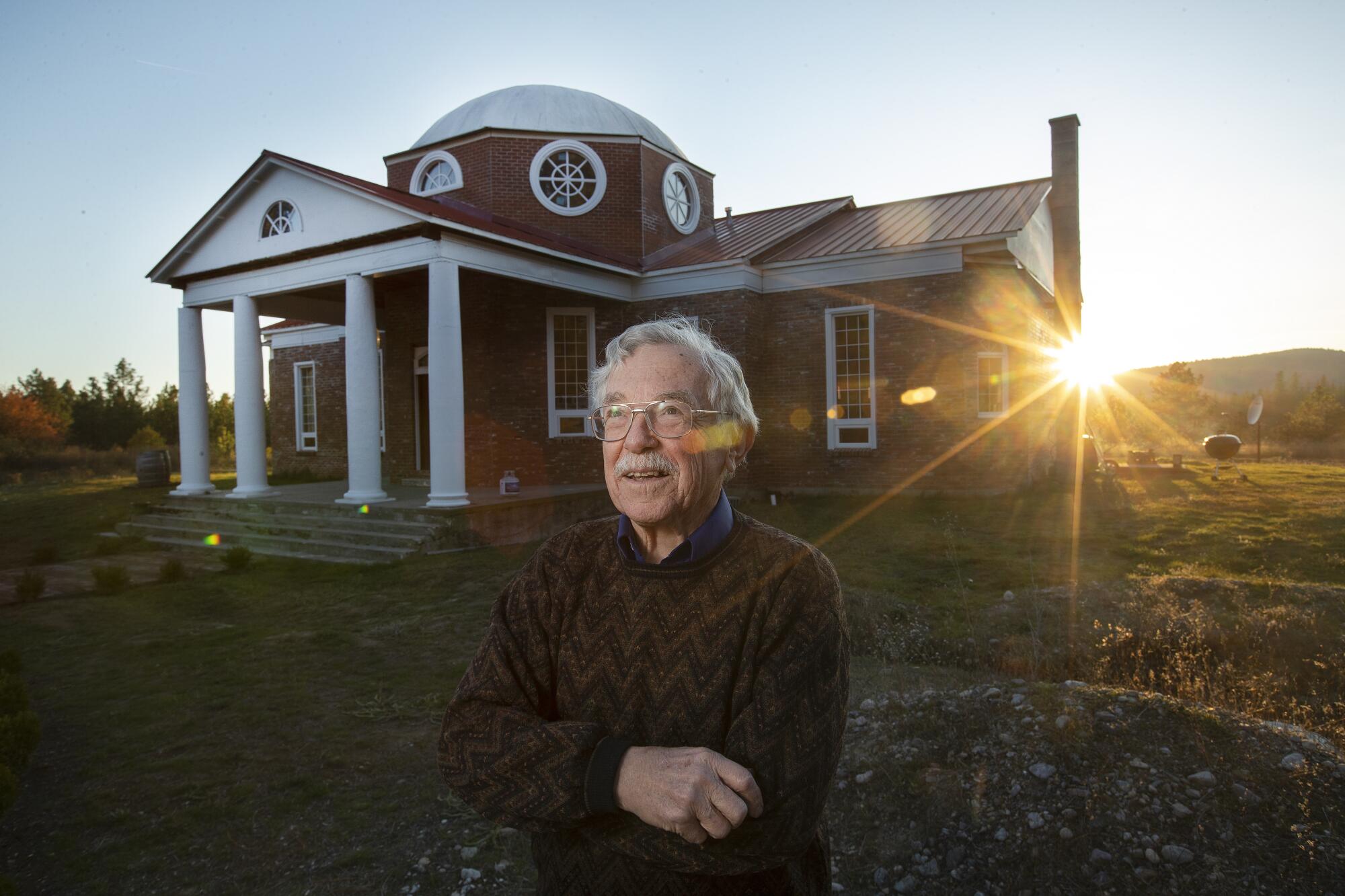
- Share via
We hold these truths to be self-evident, that all men are created equal.
Except for Dan Sisson, this 82-year-old guy in the Pacific Northwest. He’s not like us.
Sisson has spent more than three decades planning and building a replica of Monticello, Thomas Jefferson’s iconic home, in an isolated timberland in eastern Washington. He foraged to find cheap materials before digging the foundation with shovel and pickax at age 61. And he hasn’t stopped since.
Sisson is a historian and author, Army veteran, retired professor and former national magazine columnist. Like Jefferson, he designed and built his home without formal schooling in architecture or construction.
Because he couldn’t afford to have the home built for him, Sisson scrounged for free bricks and cheap timber, flooring and marble. He straightened thousands of used nails. He got help from his wife and son, friends and others captivated by the idea of creating a Monticello northwest of Spokane.
To meet costs, he taught a double load of classes at Eastern Washington University until a cancer diagnosis nudged him into retirement three years ago.
Sisson has slowed since. But he keeps working. He’s writing a fifth book, about what he sees as the destruction of democracy and American institutions, and he’s still scavenging for the neoclassical dream house he’s erecting, brick by pillar by 22,186 used bricks.

June mornings in eastern Washington can seem scripted by God, as was a day Sisson recalls from 2001. Brilliant sunshine flooded the building site as he reached a joyous milestone. He had begun putting up walls.
Looking west, he could see across Chamokane Creek, over the treetops of the Spokane Indian Reservation and it seemed clear on to forever.
Sisson knew nothing about framing walls so he hired a carpenter, who came to work that day after a row with his wife. Upset and distracted, the man climbed halfway up a 12-foot stepladder, lost his balance and fell shoulder-breaking, head-smacking first onto the deck. His eyes rolled back in their sockets.
Sisson’s wife, Karen Meyer, rushed the man to a hospital nearly an hour away. Sisson stayed behind, putting away tools, worrying about the worker and the house.
The carpenter, who later recovered, had been a perfect fit. Taken by the idea of a new Monticello, he agreed to help frame the walls for the small wage Sisson could afford.
Now what?
‘I thought he was crazy. He didn’t have the money to work with.’
— Dennis Little, a carpenter, on Dan Sisson
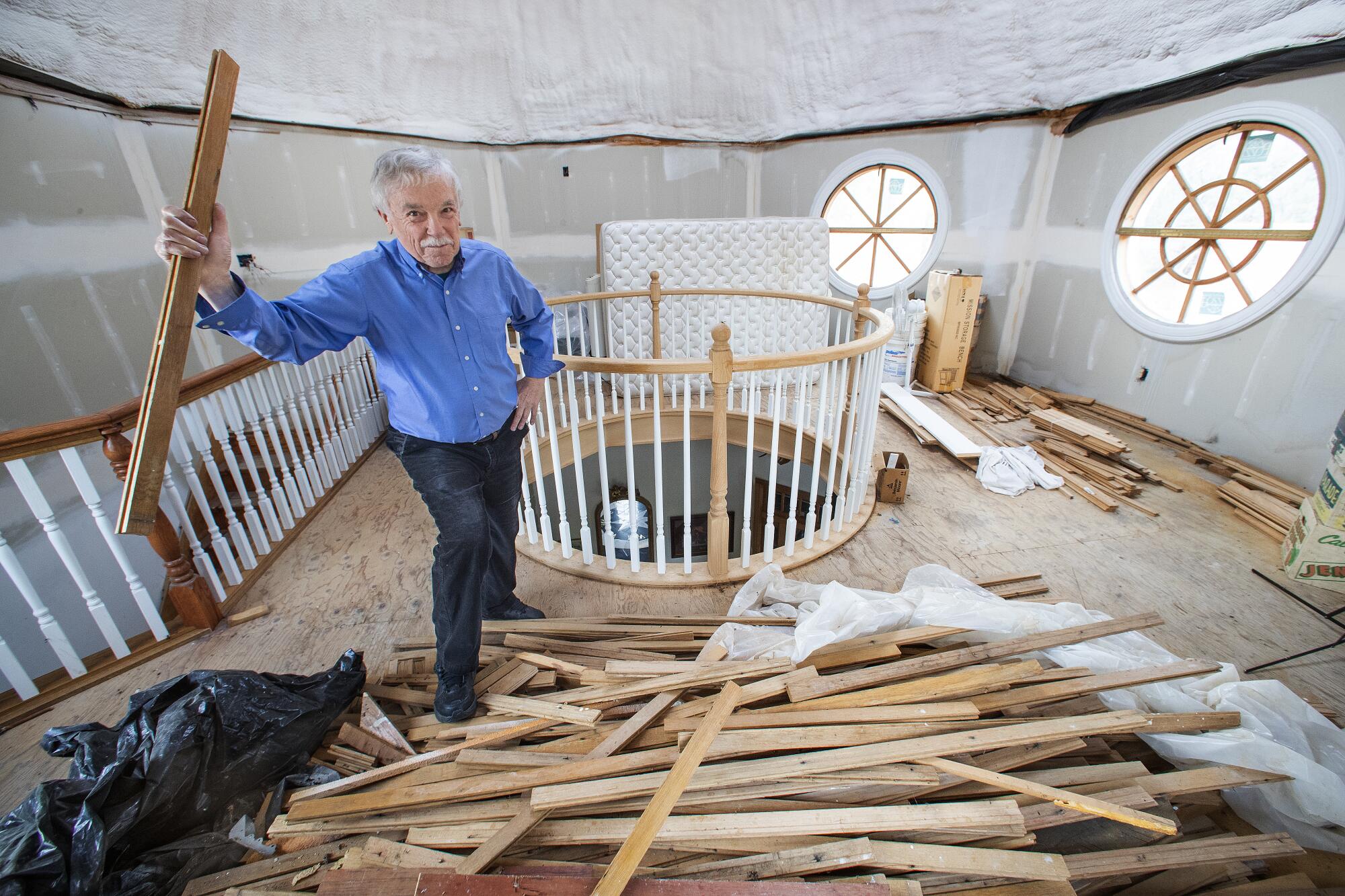
As Sisson fretted, he heard a car approaching on his one-lane dirt road. A blue Pontiac convertible pulled up. From the driver’s seat unfolded a physical specimen.
“He looked like a Viking,” Sisson says of the man’s long blond hair, muscular shoulders and narrow waist.
Dennis Little, from nearby Nine Mile Falls, said a friend told him days earlier that Sisson needed help.
Little, now 65, recalls that he arrived to find Sisson entirely lost. “I thought he was crazy,” Little says. “He didn’t have the money to work with.”
But he says he took an instant liking to Sisson and his outsized dream.
“You ever framed a house?” Sisson asked.
I stopped counting at 2,000, Little replied.
“I can pay $12 an hour.”
I haven’t gotten that for 30 years, Little responded.
But the next morning, taken by Sisson’s vision, the Viking of Nine Mile Falls began working for $12 an hour.
Was it divine intervention that put Little at the site, unannounced, less than an hour after the accident? From the beginning of Monticello West, Meyer says, “every time we needed something, it showed up.” She calls it synchronicity.
People who have helped with the mansion suggest another reason. The secret sauce isn’t serendipity as much as Sisson’s mixture of need, architectural ignorance and passion — which he conveys with a dollop of Southern military charm.
Sisson is perpetually short of the two things that would stop an entirely sane person: money and construction know-how. But instead of hiding those flaws, he bares them — then swallows you in his world. He has never climbed a mountain, but wouldn’t Everest be a hoot?
The two men framed the house in seven weeks.
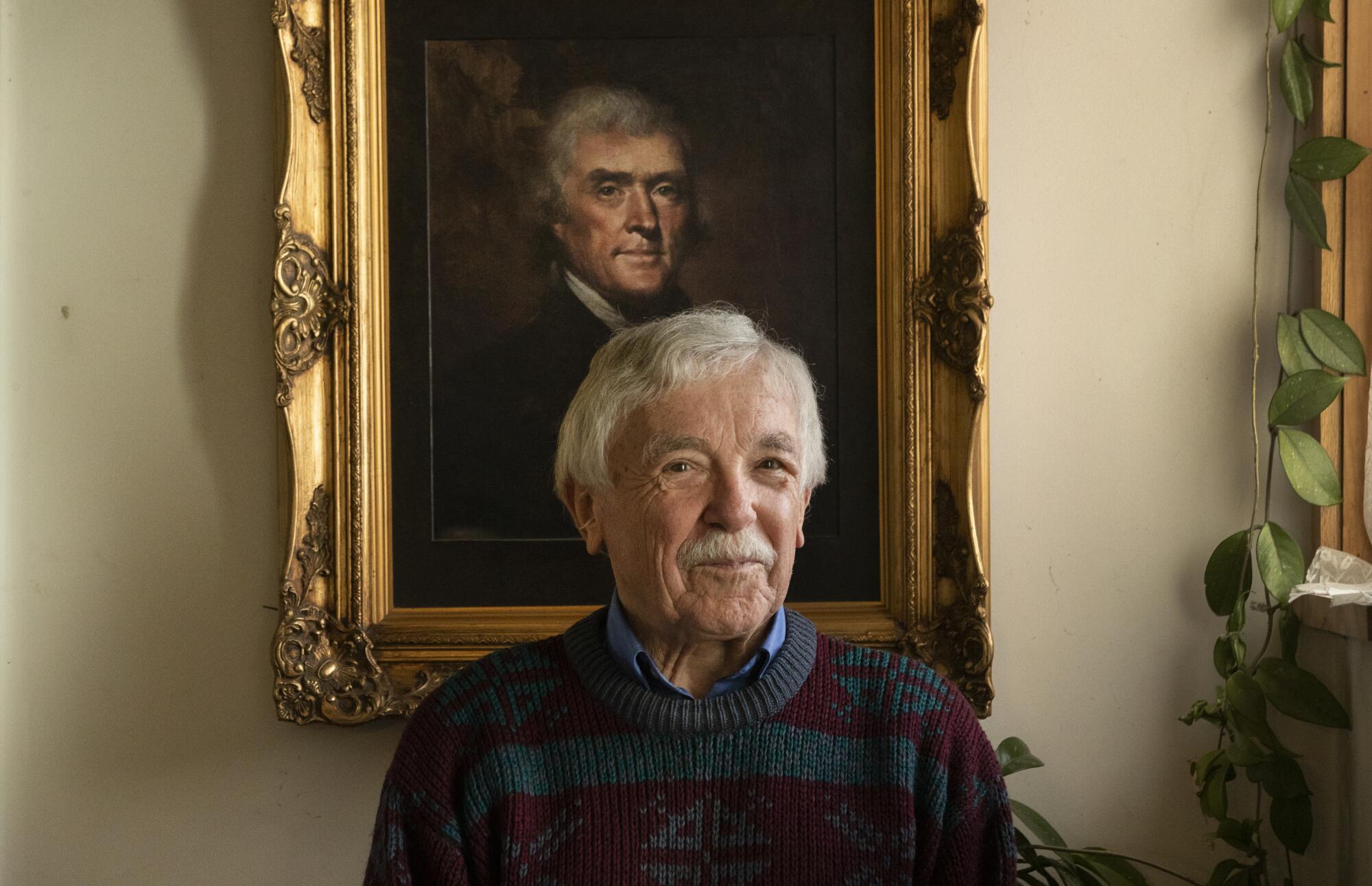
Sisson is a complex man. He’s romantic, anti-authoritarian, genial, stubborn. His soul, however, is found as easily as pulling a nickel from your pocket.
He grew up in northern Virginia and remembers his father, a U.S. Army cartographer, taking him to Monticello as a boy. “Son, if you’re ever going to build a house, you should build one like this one,” his father said.
Sisson graduated in 1955 from St. John’s College military prep school in Washington, D.C., and went straight into the Army for three years. The decades that followed were a hodgepodge.
He dabbled in college football at Long Beach State, earned a PhD in history from Claremont Graduate University in Pomona, became a researcher at a liberal think tank in Santa Barbara and ran as a Democrat for Congress, losing in a 1976 general election. He became an Alaska newspaperman, a columnist for Field & Stream magazine and a U.S. government contractor in Oregon. He taught at 12 colleges across the West. He married, divorced, married, divorced and married.

It’s a life seemingly in search of a through line. That’s where the nickel comes in: Jefferson on one side, Monticello on the other.
Sisson’s first book, “The American Revolution of 1800,” published in 1974, argues that Jefferson’s election as the third president put the nation on a truly democratic course, altering a national impulse for elitism and centralized power evident under the first two presidents.
Sisson says he understands history’s changing views of Jefferson, especially his embrace of slavery and the keeping of a slave mistress until his death. He was “a flawed human, like many of us.” “But his Declaration of Independence gave birth to America,” Sisson says, and that’s what he wants Monticello West to celebrate.
During a dinner at the house, his mood flattens at mention of national affairs. In his view, a slow-moving right-wing coup began three decades ago and has accelerated under President Trump. One institution after another is failing, he says, including the press.
As candlelight flickers over his silvery mustache and brown and gray hair, Sisson brightens at mention of his other lifelong passions, hunting and fishing.
The rotunda of Monticello West features mounted bison and elk heads and stuffed ducks, geese and a pheasant. Leaning by the back door is a double-barreled 16-gauge Western Arms shotgun.
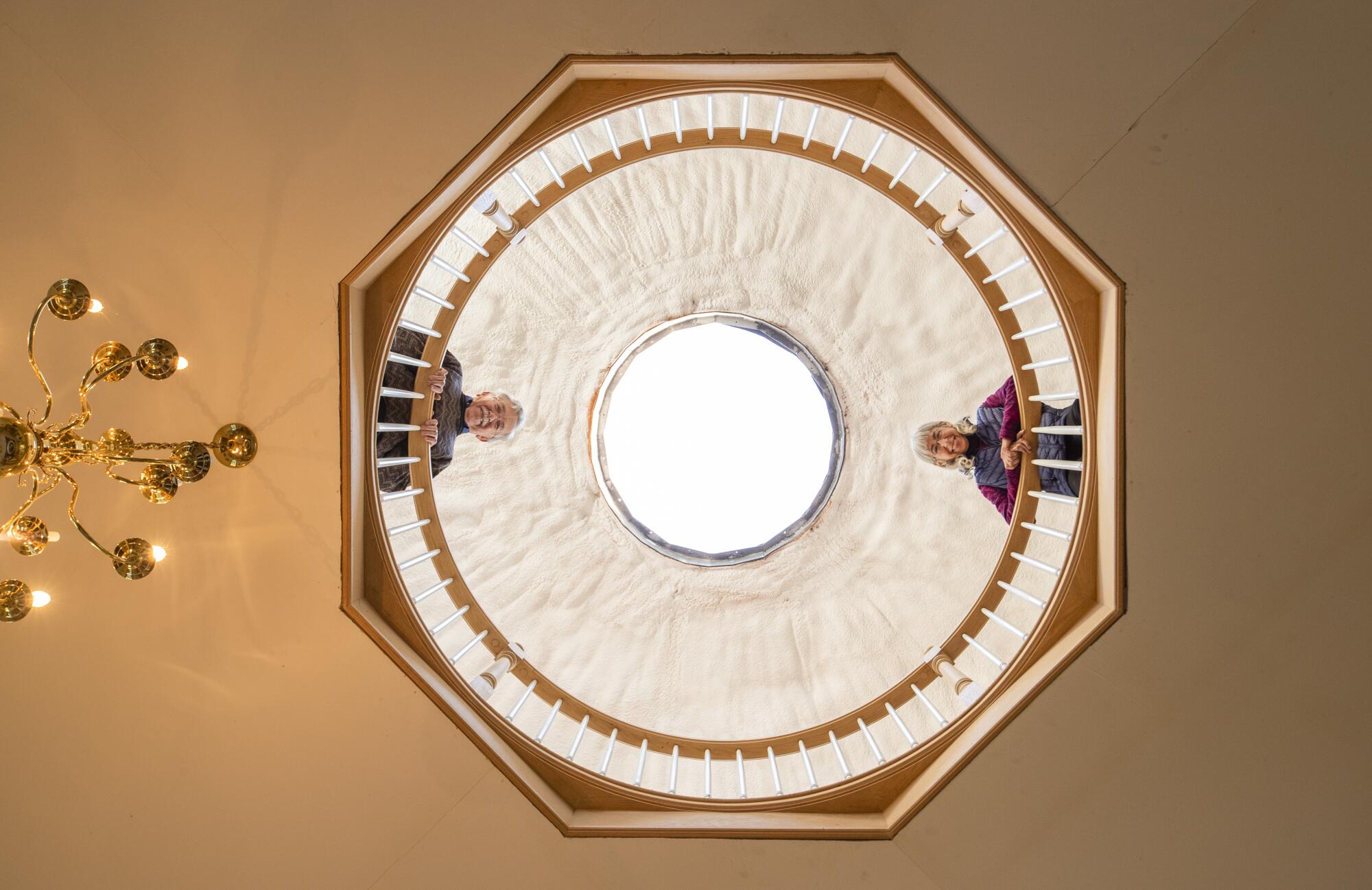
Sisson conceived Monticello West in the mid-1980s. At the time he was under contract with the U.S. Forest Service to manage Lava River Cave, a slice of national monument in central Oregon.
Employees of Pozzi Window Co. from nearby Bend occasionally came to the cave to eat lunch, and Sisson told them about his dream. They offered to sell him cast-off windows for $50 apiece. Which ones did he want?
He had no idea. But he knew this was his moment. The moment. To choose windows, he needed a rough building plan. Either put pencil to paper or end the fantasy.
“I looked at this as a test of my liberal arts education,” he recalls. “Either I can learn to do this or I’m a goddamned failure.”
Dan Sisson laughs about his ignorance today, about the fact that he had no idea what it would take to build a replica of Monticello, Thomas Jefferson’s iconic home, in the middle of nowhere in eastern Washington.
Sisson studied images of Monticello and books about architecture — and bought 30 windows of various shapes for $1,500. He had no land, no blueprint, little money and no clue about the enormity of the undertaking. But he had taken a first step.
Next came 22-foot beams salvaged from old lumber mills being razed in Bend. He paid $5 apiece.
A man driving a truck full of marble came to see the cave. He worked for a company in Washington and had just been at a home-building show in Bend without making any sales.
Sisson pounced. “Would you sell some?” Within the hour he bought 150 pieces for $100.
And so it went. Oak floors from leftovers, cement blocks, cabinets, molding, wood — Sisson was picking music for an orchestra he didn’t know how to conduct.
For a detailed building plan, Sisson turned to the nonprofit foundation that runs Jefferson’s estate. No luck.
So he visited Monticello three decades ago with a tape measure, pulling it out during a tour. Security guards stepped in. No measurements allowed.
How dare they, he thought as he left. “I’m going to build this thing and to hell with those people.”
‘I never loved the idea. But I loved Dan.’
— Karen Meyer, Sisson’s wife, on his dream project

Back home, he read deeply about Andrea Palladio, the 16th-century Italian architect whose style influenced Jefferson’s design. He calculated Monticello’s dimensions by reading history books. He roughed out a floor plan.
Meyer met Sisson when she visited the cave from Spokane in 1991. They began dating.
She found Sisson compelling and kind. She liked everything about him, except for this one thing.
Build a new Monticello?
“It seemed grandiose and in some ways was against my values,” recalls Meyer, a retired violinist for the Spokane Symphony. She struggled with the notion of a life consumed by a house.
As they fell in love, Sisson realized that he had to choose: Monticello or Meyer.
He chose his future wife, who was delighted for a time — until she discovered something else about Sisson. He never truly lets go. He is charming and maddeningly relentless.
“Every time we passed a house with pillars, he’d say, ‘Don’t you love those?’ ”
Meyer reconsidered. “I never loved the idea,” she says. “But I loved Dan.”
The couple bought 25 junk-strewn acres near Ford, Wash., in 1998 for $19,000 and began serious preparations for a replica mansion nearly as large as Jefferson’s.
They moved into the house in 2002. It was a shell with a roof, scarcely habitable. “My requirement was running water,” Meyer says.

Year after year they lived among heaps of building materials, with perpetual noise and construction dust. It strained the marriage. They felt overwhelmed at times. “But once you start something like this, how do you stop?” Sisson says.
Slowly, year by year, the work got done. Life got better.
Today the house is grand, inviting, comfortable — and unfinished. Sisson says it’s about 90% complete.
The exterior is a four-fifths scale replica of Monticello. The interior is very different, with fewer, but larger, rooms, some with taller ceilings.
Meyer’s Steinway piano sits in an enormous “Big Room” behind the rotunda, between an open kitchen and a modest dining table. The room’s other half features a large sitting area and wood-burning stove, all surrounded by unpainted walls topped by a 17-foot ceiling.
‘A lot of my neighbors don’t even know who Thomas Jefferson was.’
— Dan Sisson
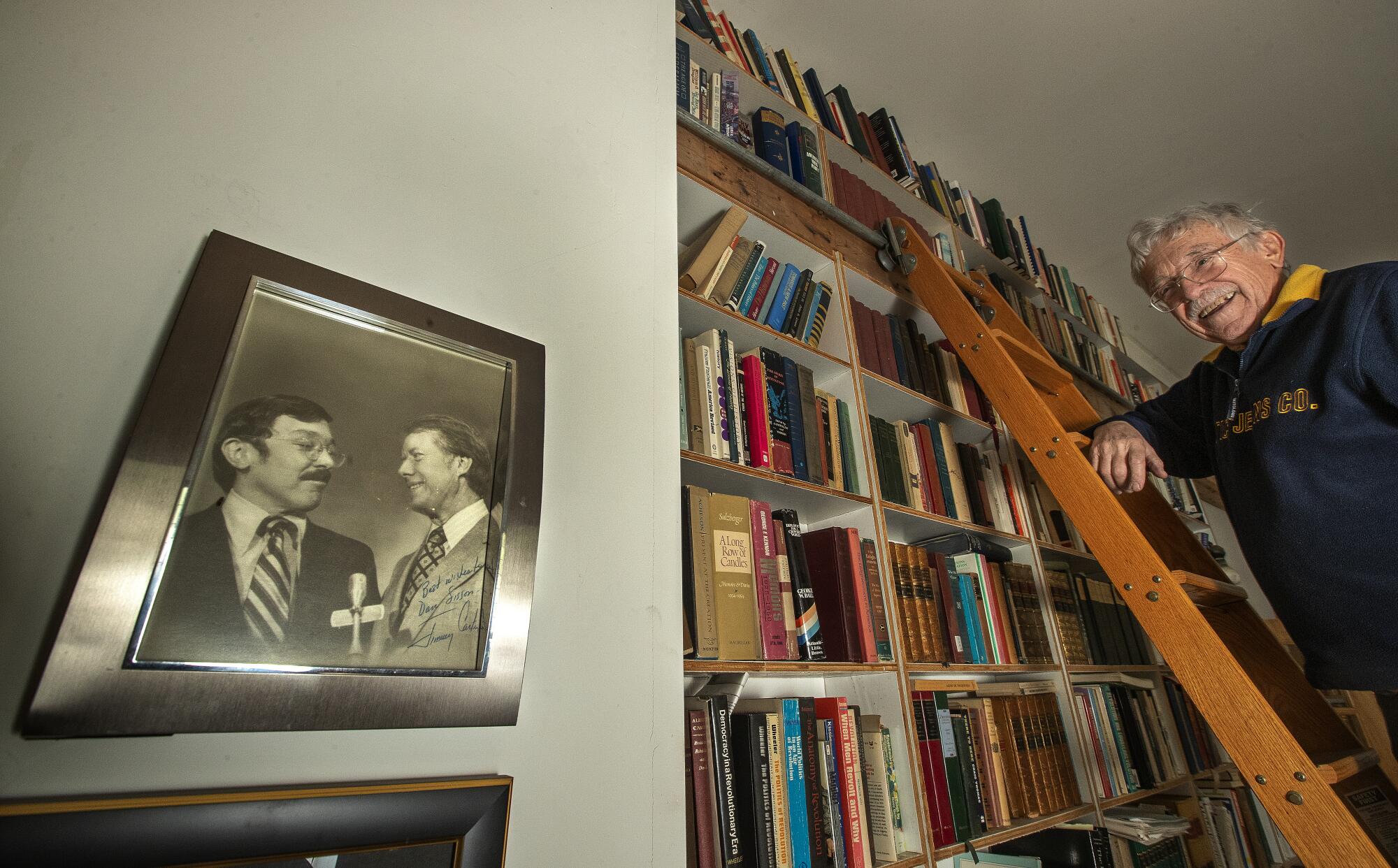
Guides to etiquette say dinner guests have a duty to be interesting. At Monticello West, the obligation is to be thoughtful.
Sisson tests ideas, gathers new ones. He tolerates small talk, enjoys rich stories. But his passion is national history and politics. Those are Meyer’s as well, plus the arts.
They see Monticello West as a symbol of Jefferson’s brand of liberalism, his belief in “permanent, peaceful constitutional revolution” that Sisson says his hero might foment today to save a foundering ship of state.
It’s possible the couple could have picked a better place to erect their symbol. They chose the land for its beauty and natural spring water. They didn’t anticipate life in a county that would vote 3 to 1 for Donald Trump in 2016, a place where some locals publicly advocate violence against liberals.
Sisson and Meyer are deliberately vague about their home’s location, tucked down unmarked roads, beyond cellphone coverage. But Sisson shrugs off worries about the community.
“People know I’ve got shotguns and stuffed heads,” Sisson says. “They just assume that I’m one of them.
“A lot of my neighbors don’t even know who Thomas Jefferson was.”
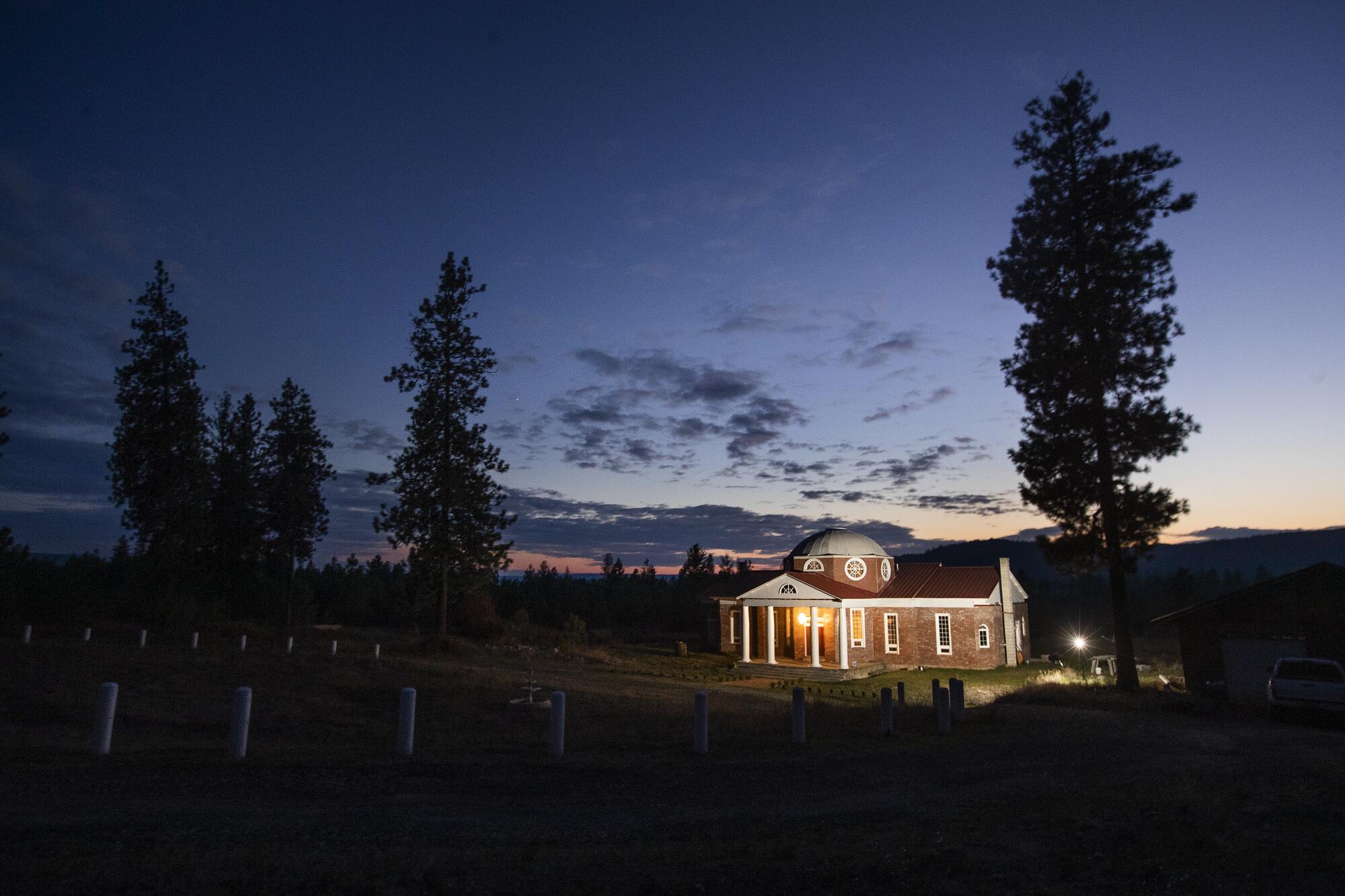
If they did, they might know that Jefferson never finished working on the two great passions of his life. His new country required constant tending, and after half a century of devotion to Monticello, the estate remained unfinished at his death.
Sisson accepts that he will never finish his Monticello. His cancer medicine makes him tired and he’s spending long hours on his book in hopes it can help American democracy.
Lately, he’s begun taking measure. He hung a homemade sign in the Big Room last summer bearing a quote from a philosopher friend at Eastern Washington.
“The way you look at things can make up for the way things are.”
Maybe they should put that on the nickel.
More to Read
Sign up for Essential California
The most important California stories and recommendations in your inbox every morning.
You may occasionally receive promotional content from the Los Angeles Times.
